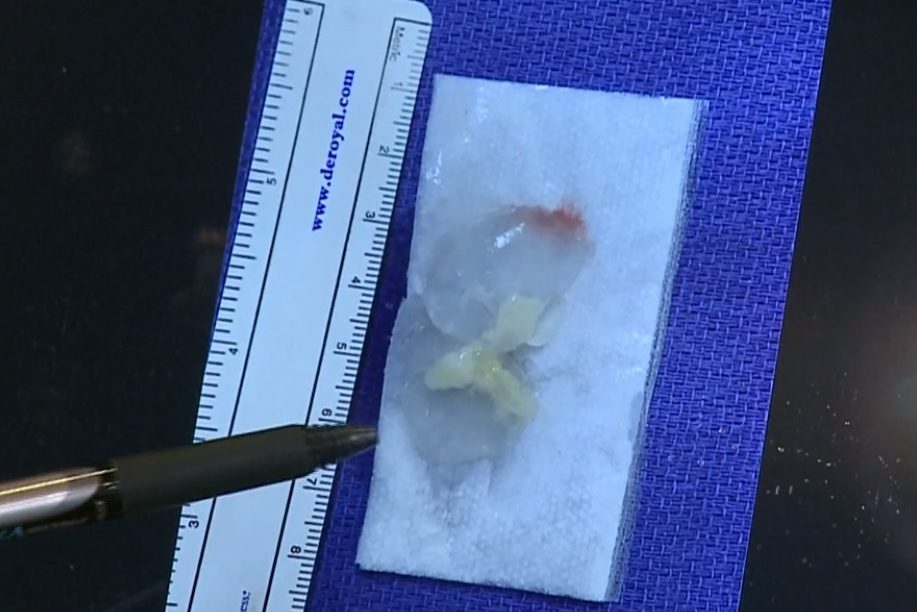Warning: This story contains images and descriptions some readers may find disturbing. Please read at your own discretion.

Doctors have removed a tapeworm from a Texas man’s brain after he complained of agonizing, vomit-inducing headaches.
Patient Gerardo Moctezuma initially thought the headaches were due to tension, doctors told CBS News. However, the pain became steadily worse, to the point where it was causing Moctezuma extreme physical distress.
“It’s very intense, very strong because it made me sweat, too — sweat from the pain,” Moctezuma told NBC News in Spanish. “I would vomit from the pain.”
Moctezuma turned to neurosurgeons at the Dell Seton Medical Center in Elgin, Texas for help. Doctors took an MRI scan of his head and spotted something unusual coiled up against his brain stem.
It was a tapeworm: a thin, ribbon-like parasite that had likely been hiding there for years, feeding on the patient and slowly growing until it was big enough to hurt him with its movements.
Dr. Jordan Amadio said it’s “rare and truly extraordinary” to find such a parasite in a patient’s brain.

Get weekly health news
“It is not commonly seen and can actually masquerade as different things,” he told NBC News.
Doctors are not certain where the tapeworm came from, although Moctezuma thinks he may have ingested it from some undercooked pork he ate in Mexico 10 years ago.
The patient added that his sister also had a tapeworm removed from her brain several years ago.

“In this patient’s case he had been in the states from Mexico for over a decade. We actually think this had been growing in his brain for over a decade undetected,” Amadio said.
He added that tapeworm infestations are more common in states like Texas and California, perhaps because people travel across the border with Mexico more often from those areas.
“It’s definitely something, I think, for every medical professional to be aware of,” he said.
The so-called “pork tapeworm,” known as Taenia solum, can grow to between 2 and 4 metres, according to the Public Health Agency of Canada. It grows in a fluid-filled bladder during its larval stage and is only 8-10 millimetres long at that point.
Doctors did not indicate whether the tapeworm in Moctezuma’s head was in the larval stage, but photos of the procedure show a translucent white sac that fits the larval description.
Humans typically get a tapeworm infection from ingesting its microscopic eggs, which can be found in tainted water and meat that has not been fully cooked, according to the Mayo Clinic. Adult tapeworms often wind up in the intestinal tract, where they quietly siphon nutrients from the host.
“Some people with tapeworm infections never need treatment, for the tapeworm exits the body on its own,” the Mayo Clinic says. “Others don’t realize they have it because they have no symptoms.”
Doctors say Moctezuma has recovered from his tapeworm infection and has gone back to normal life — although this experience will likely be stuck in his head for the rest of his days.






Comments